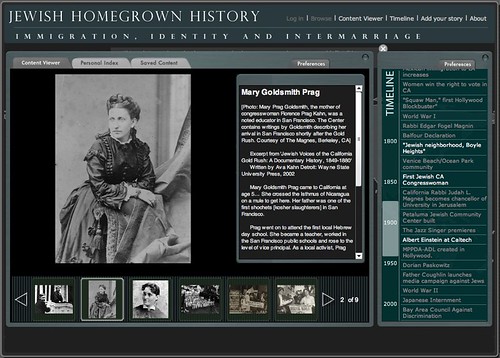Digital Projects
Jews in the Golden State
In 2007, the Magnes and the Labyrinth Project jointly received a generous grant from the Walter & Elise Haas Fund in support of Jews in the Golden State, a project aiming at the creation of an online digital portal providing an unprecedented view on the history of the Jews in California since the Gold Rush.
The grant enabled the Magnes to create and implement the architecture of its digital programs, which resulted in the digitization of thousands of archival documents, photographs and objects from its collections, and in their online distribution across a network of social media, thanks to a dedicated platform.
The grant also enabled Labyrinth Project to create the prototype of a new portal, Jewish Homegrown History, which incorporates assets and knowledge from the Magnes archives.

Homegrown History, directed by Professor >Marsha (USC), Executive Director of the Labyrinth Project, and co-directed by Rosemary Comella (USC), Creative Director of the Labyrinth Project, Professor William Deverell (USC), Director of the Huntington-USC Institute on California and the West, and Dr. Francesco Spagnolo, Director of Research and Collections at the Magnes, is still being developed, and The Magnes continues to add its resources.
The digital programs created by the Magnes for Jewish Homegrown History are listed below.
While the portal is no longer active, this page serves to document its creation.
